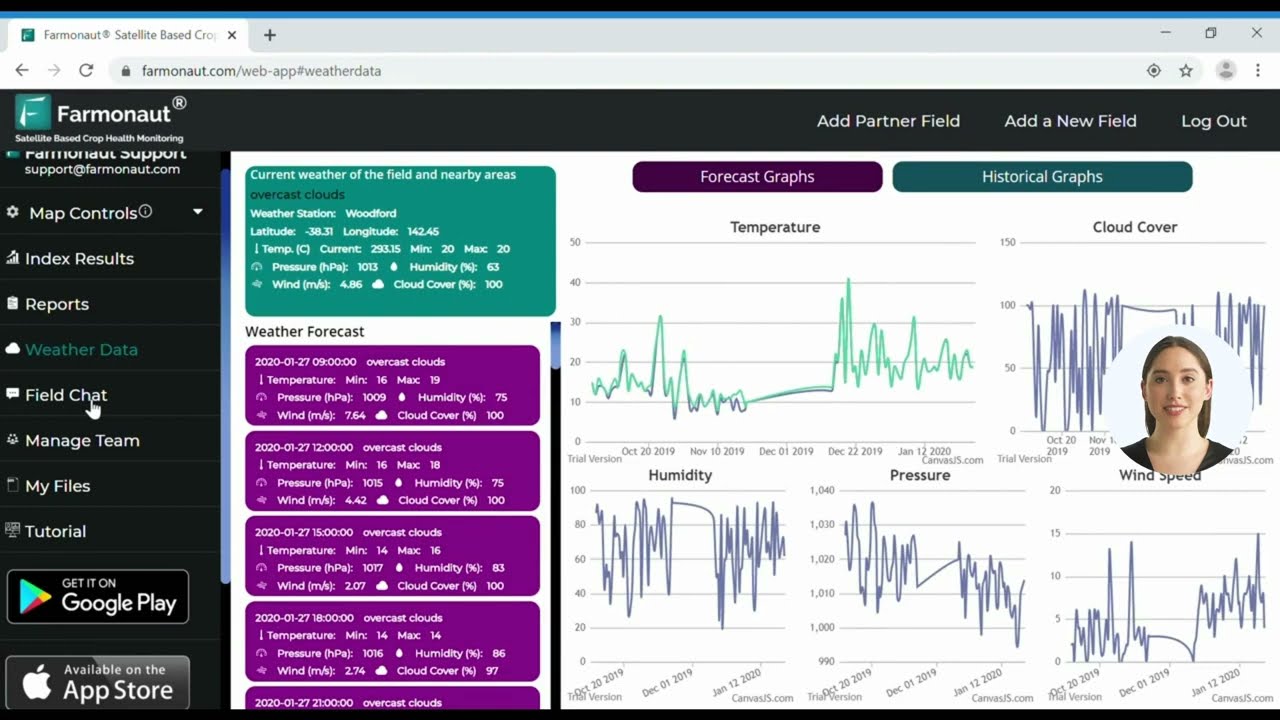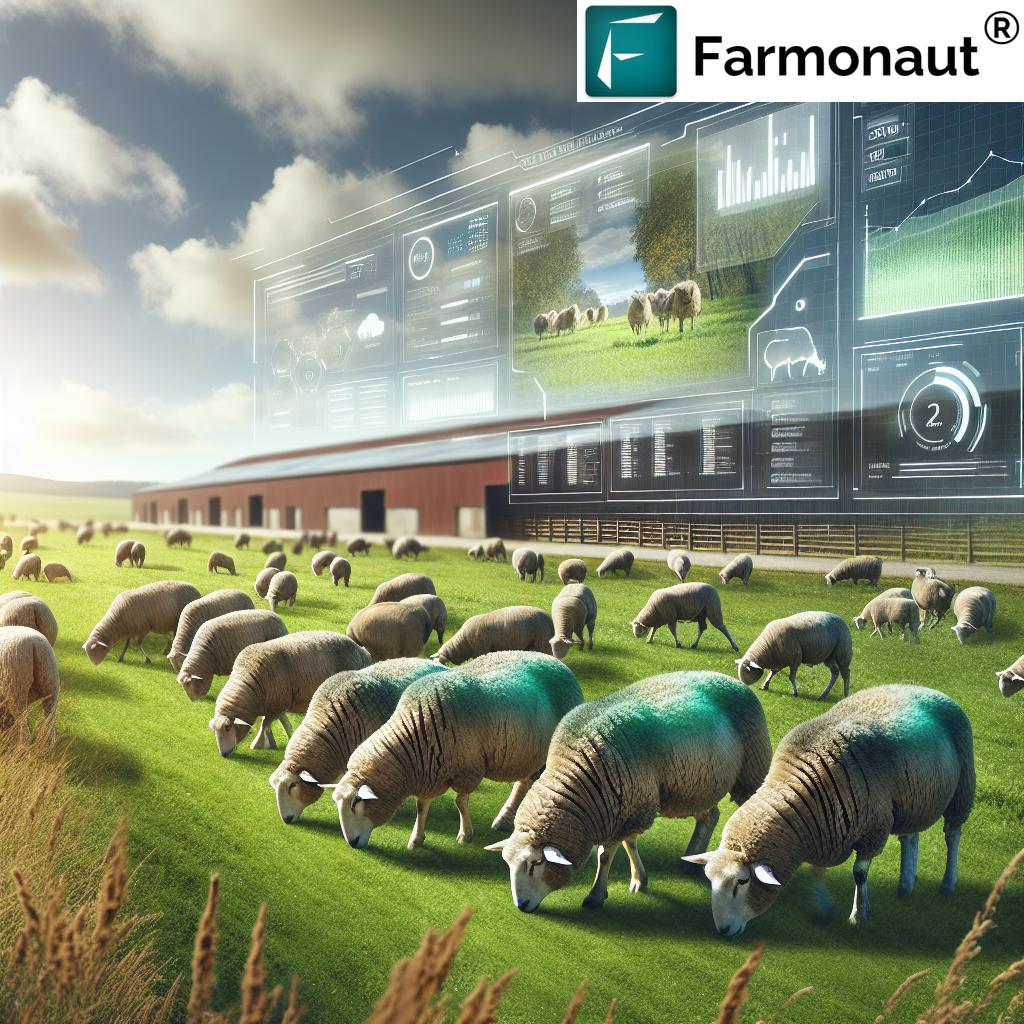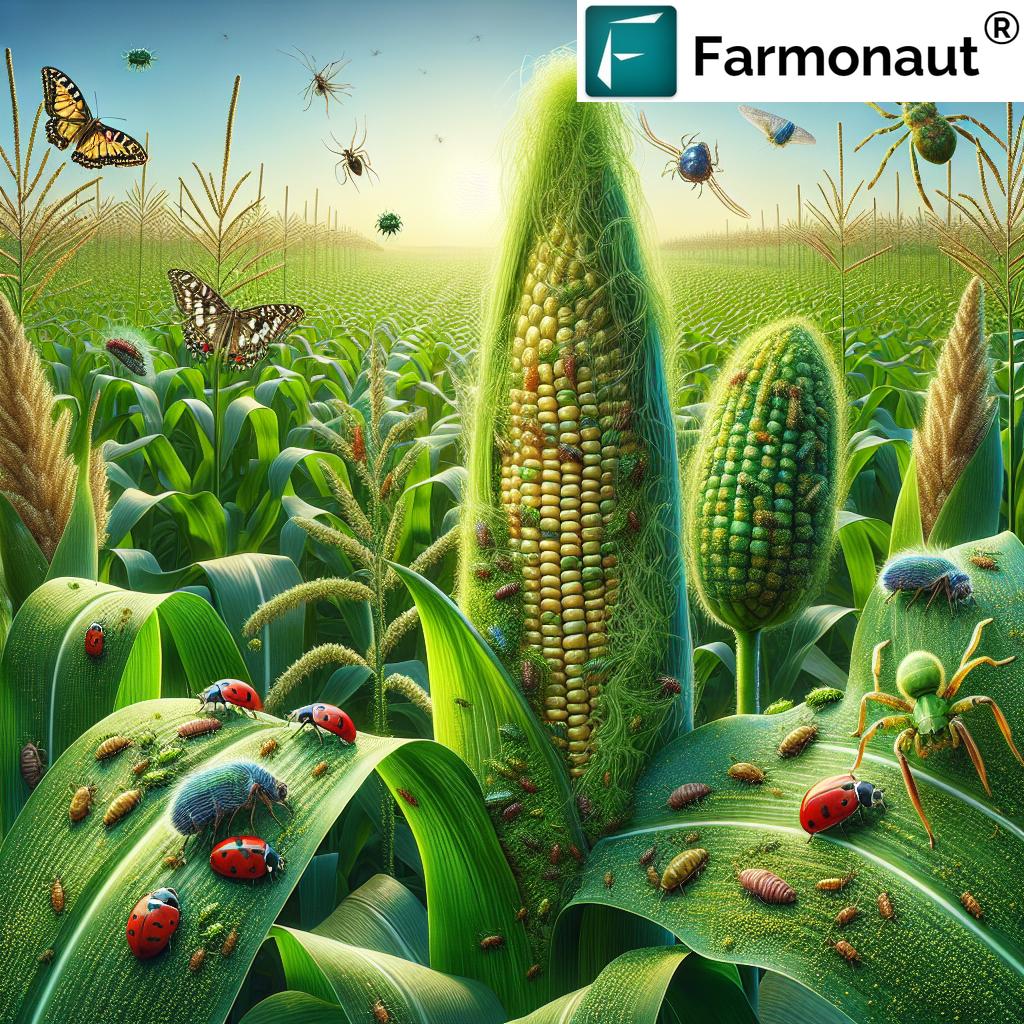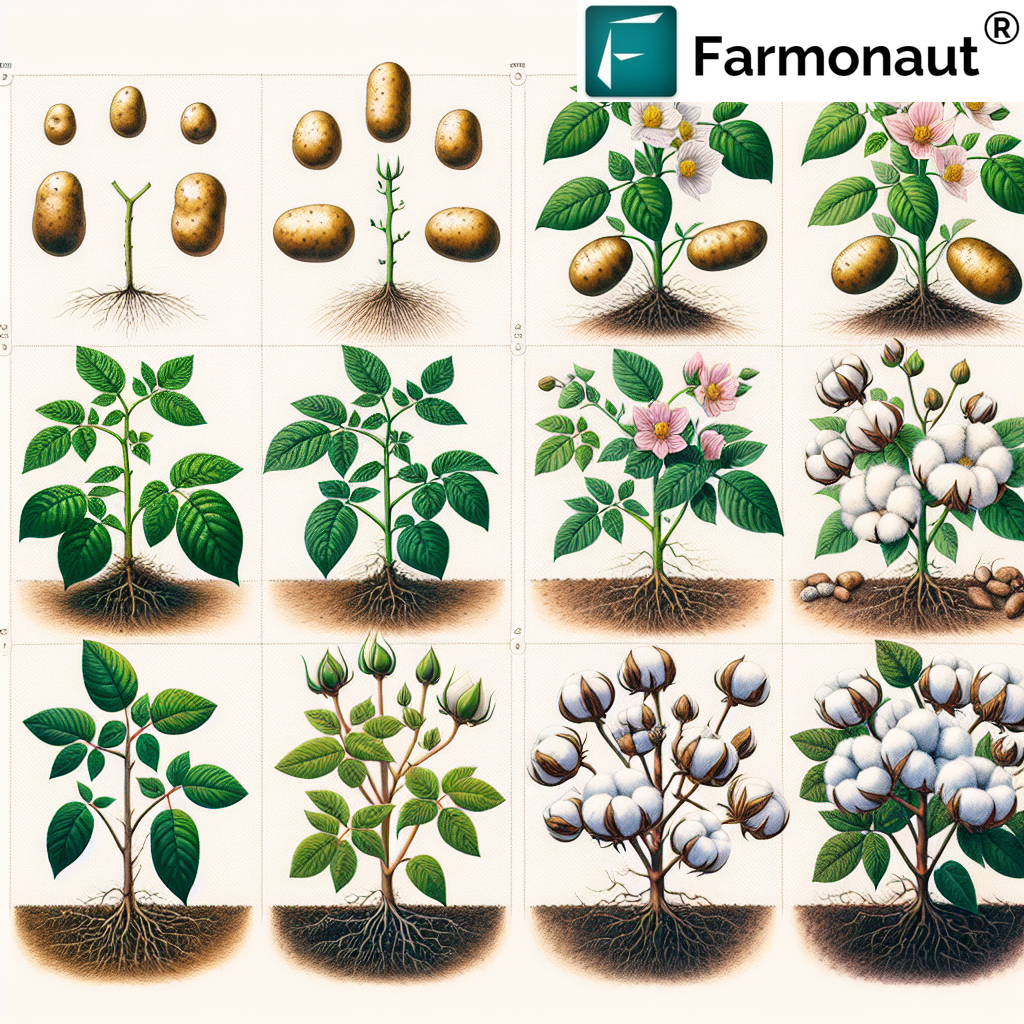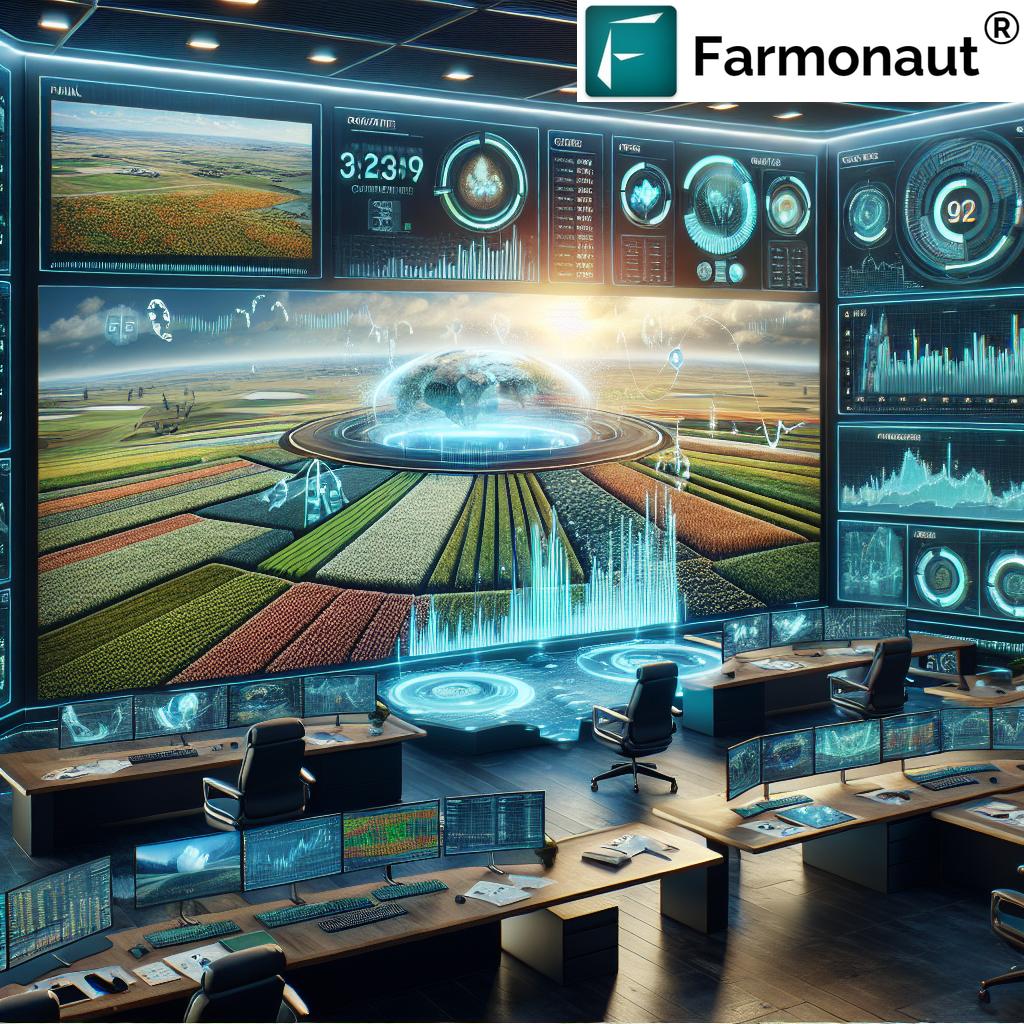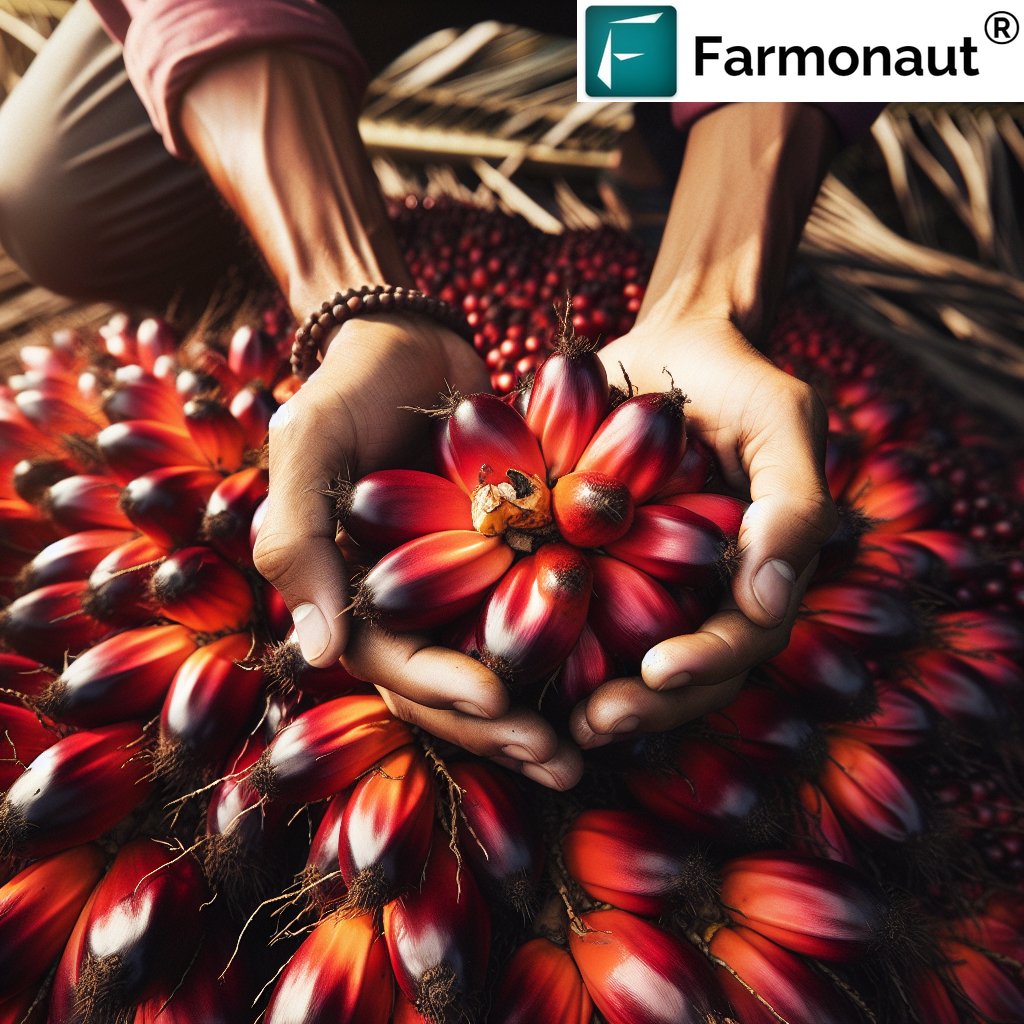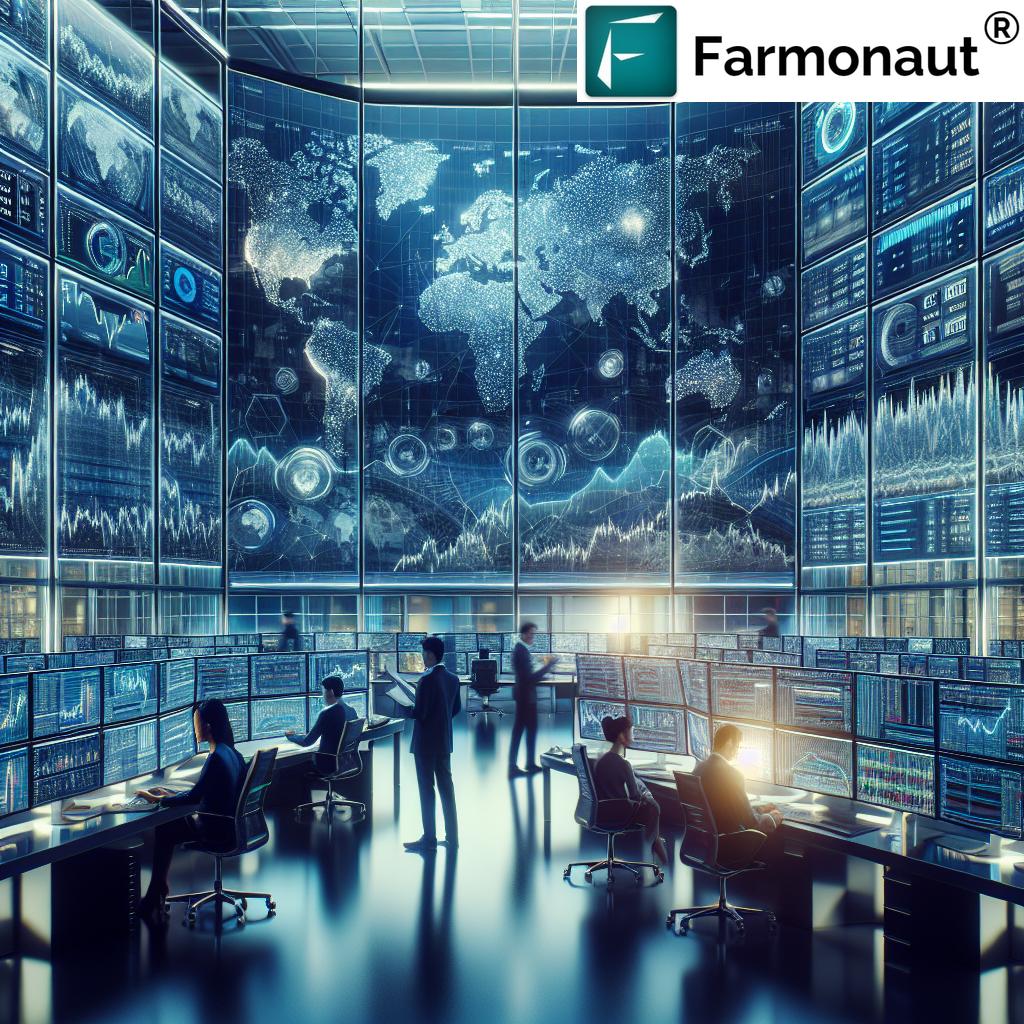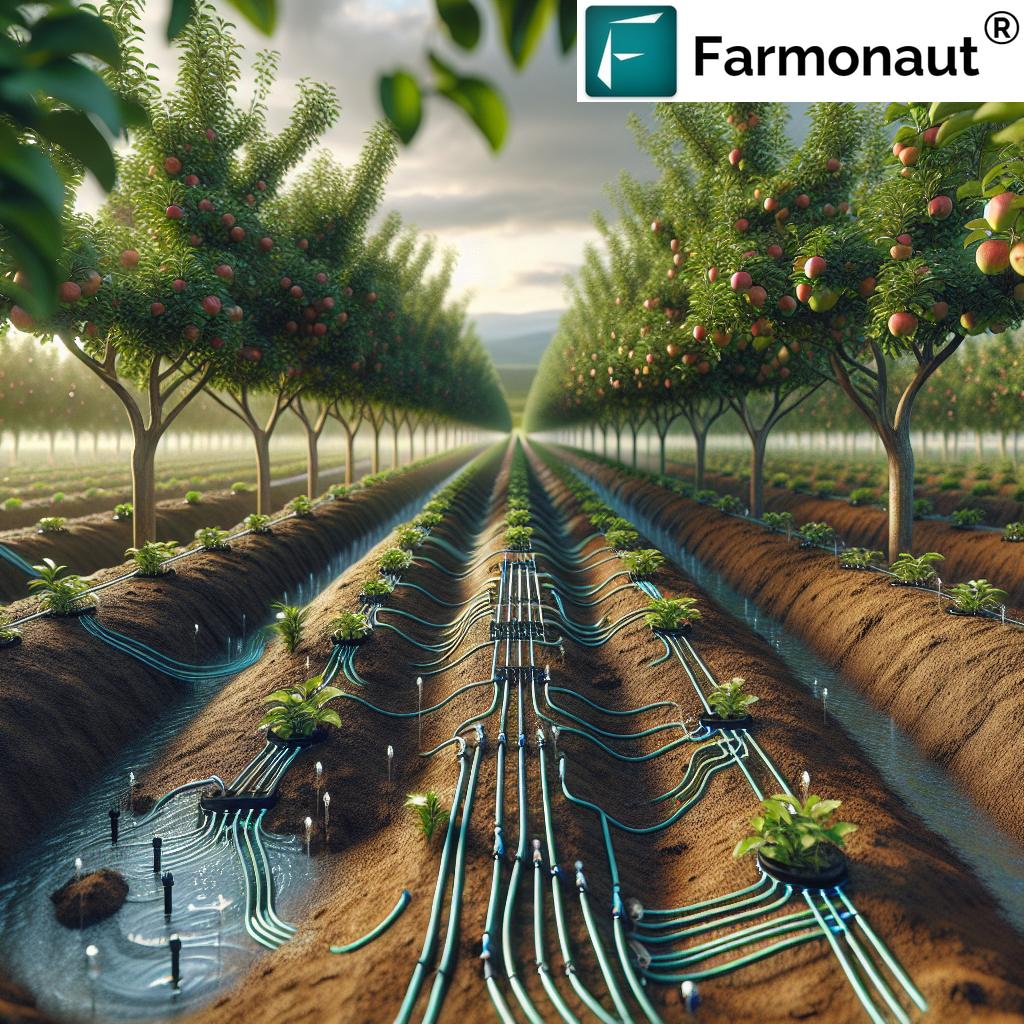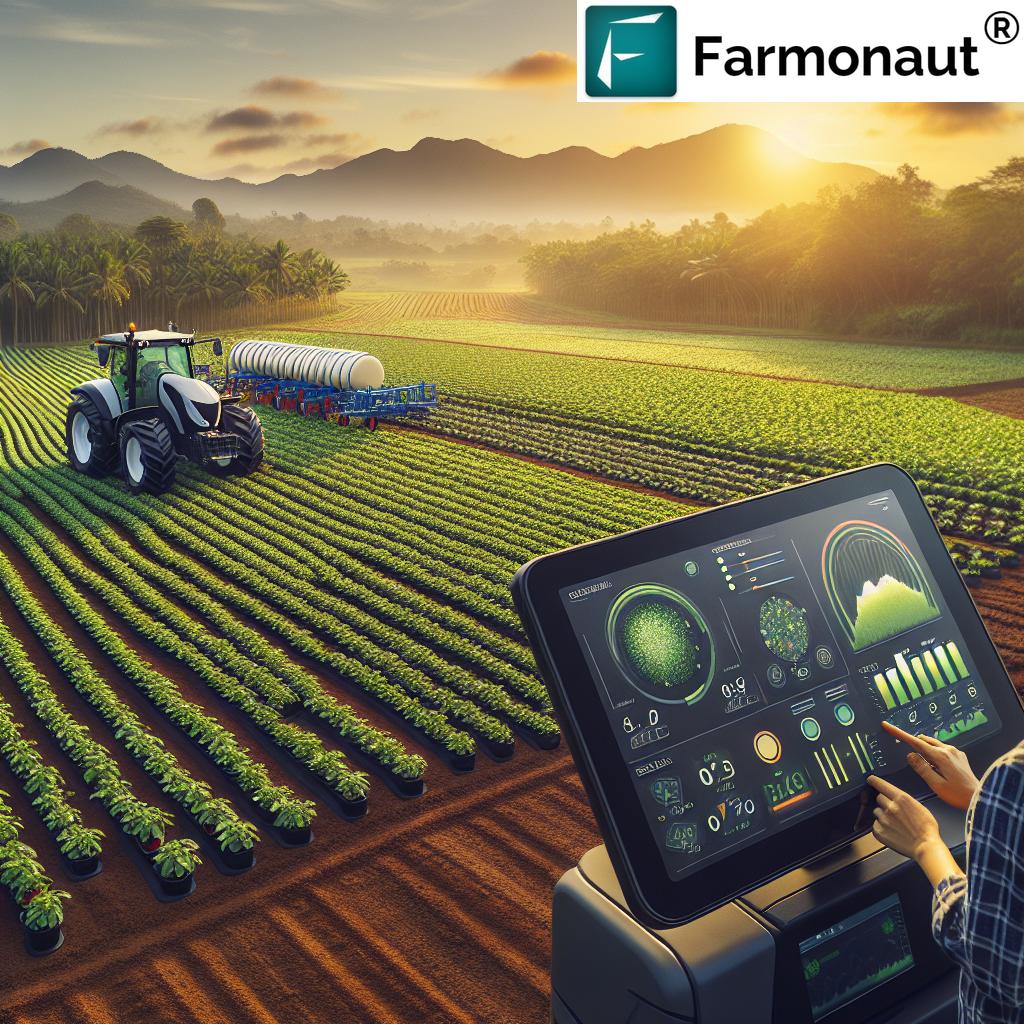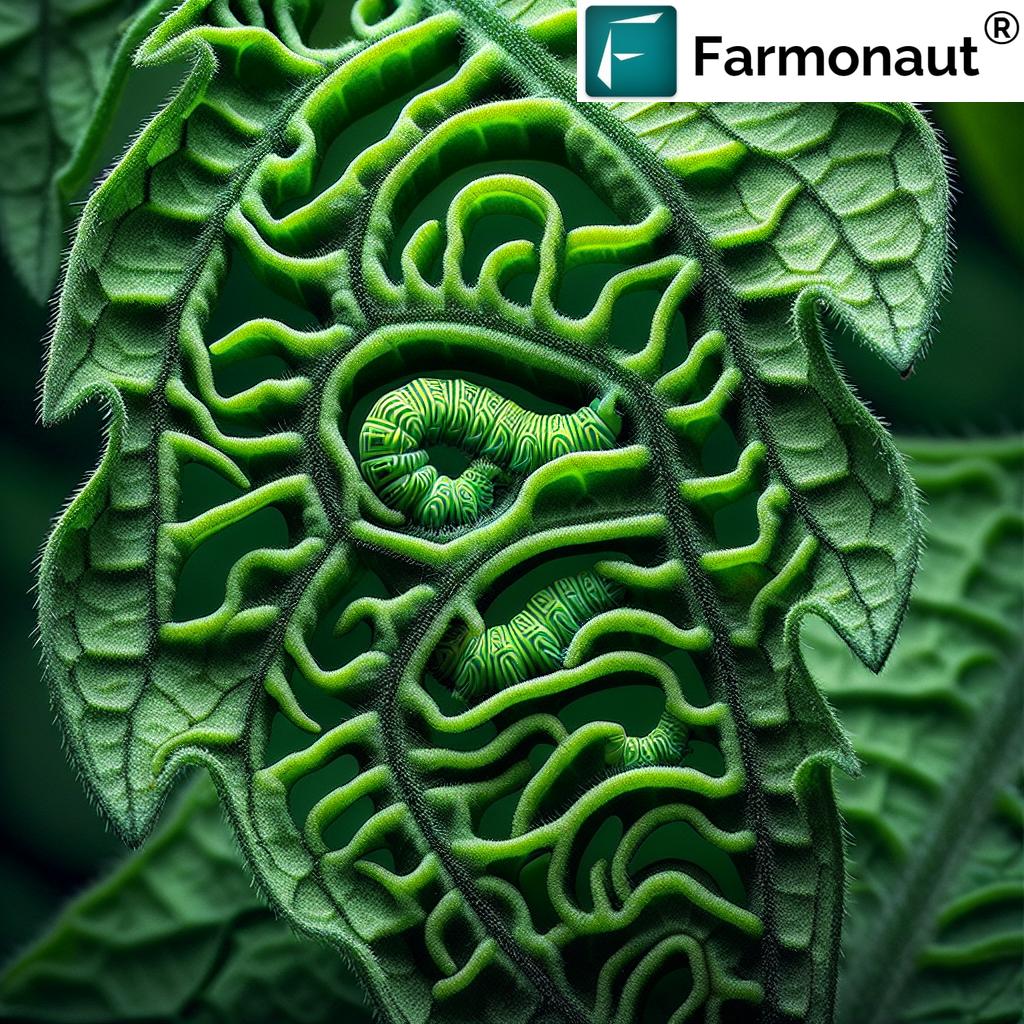Table of Contents
- Introduction: Decoding Digital Agriculture
- Trivia: Yield Growth with AI Analytics
- The 7 Digital Agriculture Secrets Changing Farming
- Comparison Table: 7 Digital Technologies
- Reaping the Benefits: Applications of Digital Agriculture
- Farmonaut’s Role in Precision Agriculture
- Challenges and Considerations in Digital Agriculture
- The Future Outlook of Smart Farming
- FAQ: Digital Agriculture & Farmonaut
- Get Started: Try Digital Agriculture Tools Today
Agriculture Digital Secrets: 7 Techs Changing Farming
Welcome to the digital agriculture revolution, where farming is reimagined through a lens of innovation, precision, and sustainability. As stewards of the land, we understand how critical it is to adapt and thrive amidst evolving challenges—climate change, resource scarcity, and growing food demand. That’s why we’re exploring the digital secrets driving modern agriculture: from AI in agriculture and precision farming technologies to farm data analytics platforms, these advancements are unlocking new levels of productivity and resilience for farmers across the globe.

Digital agriculture—often described as smart farming—integrates advanced technologies like the Internet of Things (IoT), artificial intelligence (AI), sensors, drones, and blockchain into our daily farming practices. By leveraging real-time data, analytics, and connected devices, we can transform traditional agriculture, unlocking smarter crop management, stronger supply chains, and sustainable resource use.
Let’s dig deep into the core technologies changing farming, their benefits, and how we at Farmonaut are making affordable precision farming accessible to all.
“Over 70% of farmers using AI-powered analytics report increased crop yields within the first year of adoption.”
The 7 Digital Agriculture Secrets Transforming Modern Farming
Here are the seven digital secrets—technologies revolutionizing agriculture for farmers, agribusinesses, and policymakers worldwide. Each empowers us to enhance productivity, optimize resource use, and build climate resilience.
1. Smart Agriculture IoT Sensors: Real-time Intelligence for Farms
Our journey toward smart farming solutions begins with IoT sensors—the invisible threads interlinking soil, crops, equipment, and environment. These connected devices collect and transmit granular information about:
- Soil moisture and temperature
- Humidity levels
- Crops and livestock health
- Weather conditions impacting yield
By monitoring remotely, we make informed, data-driven decisions. For instance, soil moisture IoT sensors trigger targeted irrigation, while livestock trackers send real-time alerts for abnormal animal behavior. This level of granular management supports precision and sustainability, ultimately reducing input waste and boosting yields.
In digital agriculture, these IoT devices form a network of “agriculture IoT sensors” enabling us to optimize every step of our farming operations.
2. Artificial Intelligence in Agriculture: From Predictive Analytics to Autonomous Decisions
AI in agriculture is turning overwhelming datasets into actionable insight. By analyzing patterns in crop health, soil carbon, pest pressures, and weather trends, AI systems help us:
- Predict outbreaks or yield drop-offs before they happen
- Make intelligent resource allocation decisions
- Facilitate automated pest/disease detection
- Refine workflow management for higher efficiency
Specialized machine learning models can, for example, identify optimal fertilization schedules based on soil’s organic carbon levels. The result: higher productivity, minimized environmental impact, and lower operational costs.
Our use of AI is not limited to crop diagnostics—it’s woven into every aspect of smart farm management, from weather forecasting to pest control systems and resource optimization.
3. Satellite-Based Crop Monitoring: Eyes in the Sky
Modern digital agriculture owes much to advanced satellite imagery. Platforms like Farmonaut deliver multispectral satellite monitoring to automatically scan vast fields—tracking:
- Vegetation indices like NDVI and EVI
- Soil moisture maps
- Pest or disease outbreak zones
- Yield variability across fields
With satellite crop monitoring, we unlock insights previously impossible at scale. This data upholds precision farming technologies for site-specific interventions, such as applying fertilizer only where needed or adjusting irrigation in high-stress areas, thereby reducing costs and waste.
4. Crop Monitoring Drones: Aerial Insights for Targeted Action
Equipped with cameras and advanced sensors, crop monitoring drones provide aerial imagery that unmasks pest infestations, water stress, and crop variability in real-time. The key benefits are:
- High-definition field overviews without manual scouting
- Pinpoint pest/disease hotspots for quick intervention
- Precision spraying platforms—applying inputs exactly where required
Drone imagery is a core pillar of digital agriculture—making field scouting smarter, faster, and more accurate for farmers at any scale.
“Precision farming technologies can reduce fertilizer use by up to 30%, optimizing resources and boosting sustainability.”
5. Farm Data Analytics & Cloud Computing: Turning Data into Decisions
Scalable, cloud-based platforms let us store, process, and analyze large volumes of agricultural data, including:
- Weather patterns and changing climate
- Soil health and nutrient levels
- Equipment and crop performance
- Historical supply chain records
Integrated farm data analytics distills this information to provide actionable insights—guiding strategic planning, risk management, and operational improvements. Modern systems allow remote monitoring via mobile apps and web dashboards, empowering us to make timely, informed decisions.
6. Blockchain in Food Supply Chain: Traceability & Trust from Farm to Fork
As food safety and transparency concerns rise, blockchain in food supply chain is a game-changer. By recording every stage of a crop’s journey—from farm to table—in a secure, immutable ledger, we:
- Build consumer trust in product origin and quality
- Prevent fraud and enhance food safety
- Enable instant verification and recall when needed
This digital agriculture breakthrough supports supply chain optimization while protecting brand reputation and fostering global trade.
Read more about Farmonaut’s Blockchain Traceability Solutions—ensuring transparency and trust for all stakeholders.
7. Automated Machinery and Precision Equipment
Mechanical innovation is another pillar of digital agriculture. Advanced precision equipment, including:
- Autonomous tractors and sprayers
- Robotic planters
- Intelligent irrigation controllers
reduces labor, ensures consistent application rates, and enables site-specific interventions based on real-time data. This not only drives sustainability but helps us address labor shortages and reduce operational costs. Combined with AI and IoT, these systems boost the impact of our smart farming solutions.
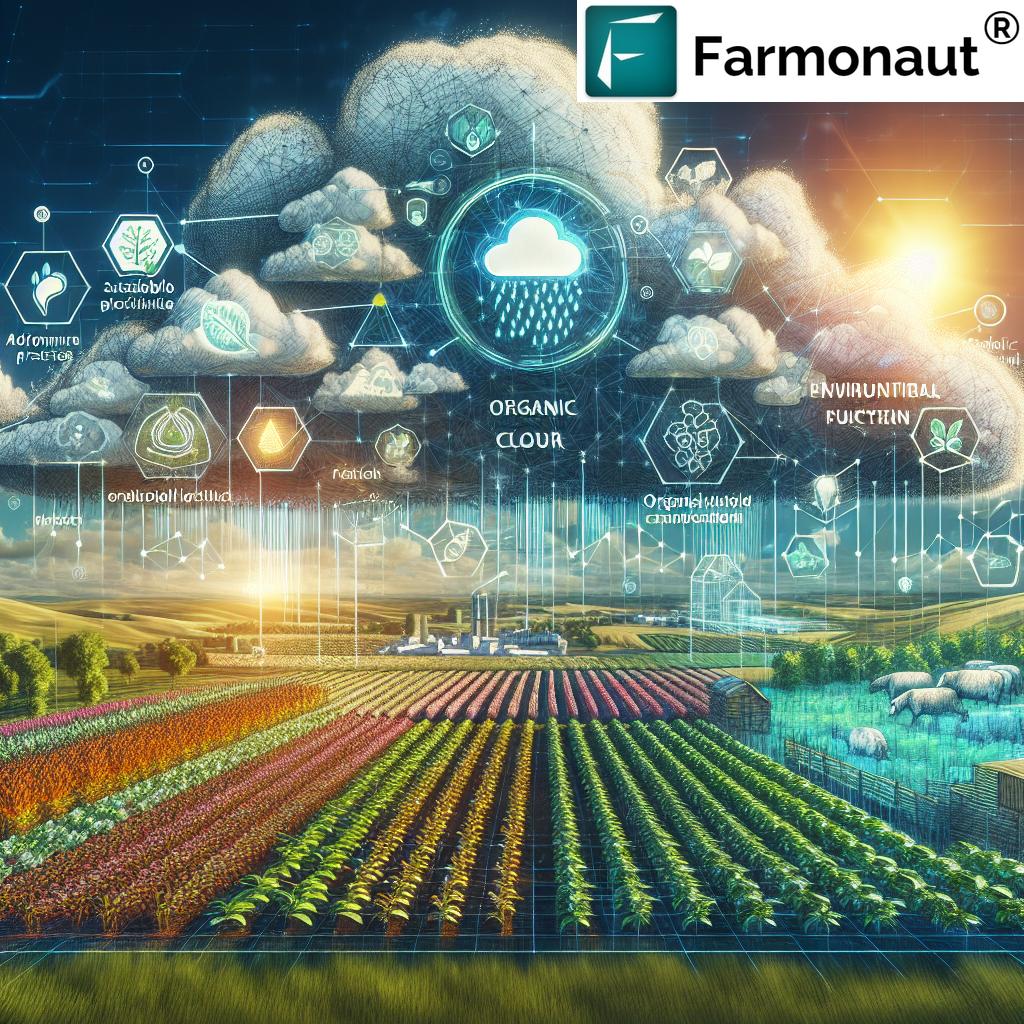
Comparison Table: 7 Digital Agriculture Technologies at a Glance
| Technology Name | Core Function | Estimated Adoption Rate (%) | Example Use Case | Impact on Crop Yield (% increase) | Sustainability Benefit |
|---|---|---|---|---|---|
| Precision Irrigation (IoT Sensors) | Monitor soil moisture and automate watering | 24 | Automated irrigation via soil sensors | Up to 20% | Reduces water use by 15–40% |
| AI Diagnostics | Analyze datasets to predict/pinpoint issues | 18 | AI-driven pest/disease risk prediction | 10–25% | Reduces pesticide/fertilizer use by 8–30% |
| Satellite Crop Monitoring | Large-scale, multispectral remote sensing | 22 | NDVI-based crop health detection | 10–20% | Early issue detection lowers resource waste |
| Drone Imagery | Aerial crop health and variability monitoring | 12 | Spot-spraying for targeted pest control | 8–15% | Targeted input reduces runoff & pollution |
| Farm Management Software (Cloud) | Centralize, analyze, and track farm operations/data | 32 | Integrated crop, resource, and fleet management | 5–12% | Improved resource allocation, lower waste |
| Blockchain Traceability | Immutable supply chain transparency | 7 | End-to-end product provenance records | N/A | Reduces fraud and enhances consumer trust |
| Automated Machinery | Smart equipment for site-specific actions | 14 | Self-driving tractors/sprayers | 8–13% | Lowers labor and energy use by ~12% |
Reaping the Benefits: Applications of Digital Agriculture
Our embrace of digital agriculture unlocks a spectrum of benefits and applications that extend beyond the farm. Let’s break these down by category:
A. Precision Agriculture—Customized Management for Every Field
Leveraging analytics from IoT sensors, remote sensing, and AI, precision agriculture lets us:
- Apply fertilizer and water only where it’s needed
- Adjust planting/seeding rates by soil zone
- Target crop protection chemicals to problem areas, minimizing environmental impact
- Monitor and manage livestock behavior remotely for improved animal health and welfare
This site-specific approach leads to higher yields, reduced input costs, and a smaller environmental footprint. Discover Farmonaut’s Large-Scale Farm Management Tools for streamlined operations across big plantations or cooperatives.
B. Climate Resilient Agriculture—Adapting to Uncertainty
Weather is increasingly volatile, but digital tools strengthen our climate resilience. Real-time:
- Weather updates and early warning systems
- Pest/disease forecasting through AI analytics
- Soil moisture and drought stress monitoring
allow us to take proactive measures, protecting crops and securing consistent yields even as climates change. This makes our farms better prepared for floods, heatwaves, and shifting seasons.
C. Resource Efficiency—Optimizing Every Drop and Nutrient
IoT sensors and AI-driven irrigation/fertilization help us use water and nutrients more efficiently, supporting sustainable farming practices that protect soil and reduce runoff. Examples include:
- Automated irrigation systems using satellite and soil data
- Variable-rate application of inputs, targeting only high-need zones
- Yield mapping to identify problem areas for remediation
Learn more about Farmonaut’s Carbon Footprinting Platform for tracking and reducing your environmental impact.
D. Supply Chain Optimization—Safer, Faster, Smarter
Digital agriculture also makes food supply chains smarter and more transparent through:
- Real-time location and condition tracking of harvests in transit
- Blockchain-based traceability for end-to-end product verification
- Remote contract verification for crop loan and insurance
This strengthens trust between farmers, buyers, and consumers. Try the Farmonaut Crop Loan & Insurance Verification feature for secure satellite-backed credit and insurance services.
E. Supporting Sustainability and the Environment
The greatest promise of smart farming is its power to make agriculture more sustainable by:
- Minimizing input waste
- Reducing greenhouse gas emissions (Farmonaut’s carbon footprinting)
- Improving farm resource management
Our adoption of advanced digital practices ensures soil health, water conservation, and ecosystem protection are central to every decision—building a food system that nurtures both people and planet.
If you’re in need of comprehensive resource and fleet management tools, explore Farmonaut Fleet Management for remote supervision and cost optimization.
Farmonaut’s Role: Making Digital Agriculture Accessible
At Farmonaut, our mission is to empower farmers, agribusinesses, and governments with affordable, accessible precision agriculture. Here’s how our suite of technologies stands out:
-
Satellite-Based Crop Health Monitoring:
Farmonaut provides real-time multispectral crop data, including NDVI vegetation health maps, soil moisture, and stress indicators. This allows for targeted interventions that increase performance and minimize resource waste. -
AI-Driven Jeevn Advisory System:
Our AI-based advisory gives personalized crop management recommendations, weather forecasts, and rapid pest alerts directly to farmers—improving decision quality, efficiency, and resilience. -
Blockchain Product Traceability:
Farmonaut’s blockchain module secures product origin and farm-to-market journey, building trust and simplifying compliance with food safety standards. -
Fleet and Resource Management:
We optimize logistics and machinery use, lowering operational costs while ensuring safety and compliance. -
Carbon Footprinting for Sustainability:
Farmonaut tracks your carbon output, aligning your farm with modern climate-conscious regulations and consumer expectations.
Our offerings are designed for farmers of all sizes: from individual growers seeking satellite-powered advice to large-scale plantation operators and agritech developers (via APIs)—all with a focus on affordability and scalability.
Farmonaut API | API Developer Docs
Challenges and Considerations in Digital Agriculture Adoption
While digital agriculture delivers immense value, several practical challenges remain that we, as a community, must address:
- High Initial Implementation Costs: Advanced sensors, drones, and analytics platforms require significant investment, potentially limiting access for some smallholder farmers.
- Data Privacy and Security Concerns: With increased data collection, concerns regarding control, ownership, and security are rising—especially with cloud and blockchain-based records.
- Lack of Technical Expertise: Effective use of smart farming solutions requires training and support for farmers to adapt to new digital systems and interpret analytics.
- Infrastructure Gaps: In some regions, poor internet connectivity can slow adoption of IoT and cloud-based agricultural technologies.
- Regulatory Frameworks: Clear, enforceable policies around data, traceability, and food safety are needed for the safe expansion of digital agriculture.
At Farmonaut, we’re committed to democratizing access to digital agriculture through affordable solutions and farmer-centric design. Equitable access and robust data security are core to our vision of truly sustainable agricultural revolution.
The Future Outlook: Smart Farming, Sustainability & Beyond
The evolution of digital agriculture is just beginning. Emerging trends are poised to radically reshape the sector:
- 5G Networks and Edge Computing—enabling instant, on-field analytics and automation for massive agriculture operations.
- Integration of Blockchain with IoT Devices—further boosting supply chain transparency and food safety compliance.
- Development of Fully Autonomous Equipment—self-driving tractors and drones delivering 24/7 precision interventions.
- AI-Powered Advisory Systems—matching every farmer with individualized, crop-specific management plans for maximum yield and sustainability.
- Bigger, Faster, and More Affordable Satellite Imagery—bringing actionable field-level insight to every farmer, everywhere.
As adoption grows, we envision a future where sustainable farming practices are both a necessity and a competitive advantage—driven by intelligent tools, collaborative data ecosystems, and a shared commitment to nourishing our planet and communities.
Frequently Asked Questions: Digital Agriculture & Farmonaut
What is digital agriculture?
Digital agriculture is the integration of advanced technologies like IoT, AI, drones, and analytics into farming and forestry practices. This enables real-time data collection, precision management, enhanced productivity, and sustainability for crop and livestock systems.
How does AI improve farm management?
AI in agriculture analyzes complex datasets to identify patterns, predict yield and pest outbreaks, recommend resource allocations, and automate decision-making—driving efficiency, yield, and sustainability.
How can I access Farmonaut solutions?
Farmonaut offers web, Android, and iOS apps, plus powerful APIs for integration. Start by downloading our web or mobile applications or explore API options and developer documentation.
What is blockchain’s role in food supply chains?
Blockchain provides secure, transparent records from farm to fork, enhancing traceability, reducing fraud, and building consumer trust in food quality and origin.
Can digital tools help make my farm more sustainable?
Absolutely. Automated sensors, AI insights, remote crop monitoring, and resource management tools can drastically reduce water, fertilizer, and energy use—lowering your carbon footprint while maintaining or increasing yields.
In summary, digital agriculture stands as a transformative force—enhancing productivity, optimizing resources, and ensuring sustainability across global farming landscapes. With platforms like Farmonaut, we’re stepping into a new era where every farmer—regardless of scale—has the power to monitor, analyze, and improve their fields, supply chains, and environmental impact like never before.
Let’s continue building a smart, resilient, and sustainable future for agriculture, together.





